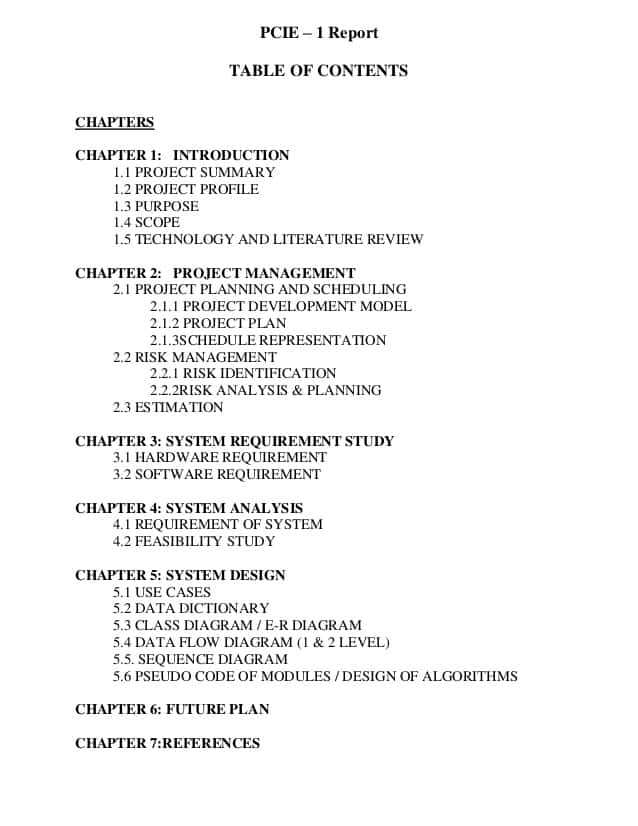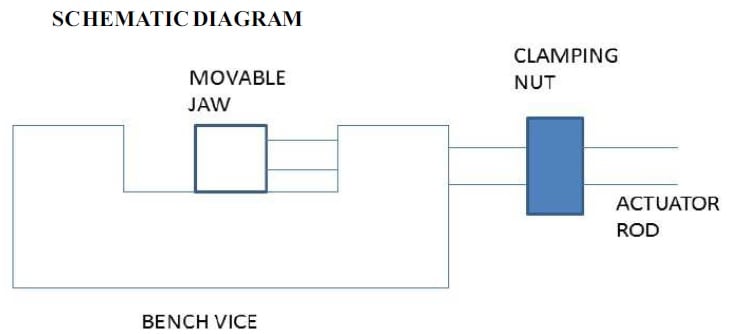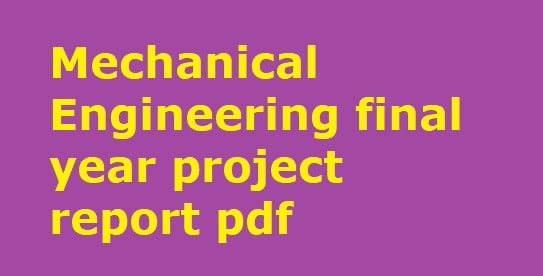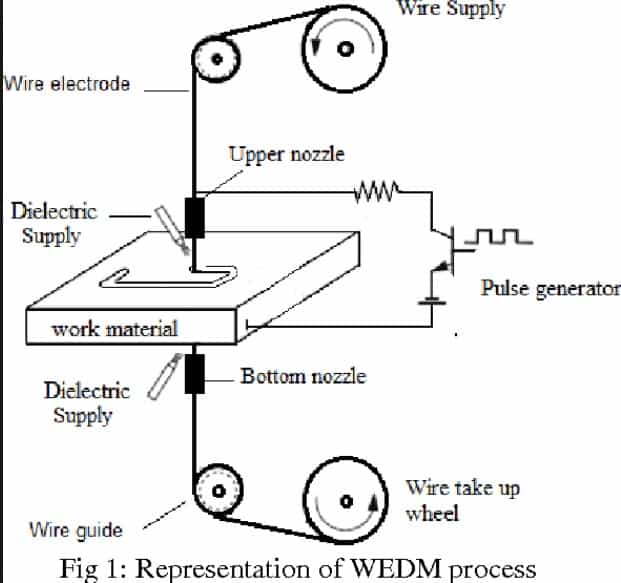FORMAT FOR PREPARING THE INTERNSHIP PROJECT REPORT
The write-up should focus on the specific objectives of the project, the methodology used, and the major findings. Regarding title, instead of giving a general, topic-like title, be specific and emphasize the explicit nature of the work. The report should be brief, with the number of
pages of the main content of the report being not be more than 30 pages (Please consult with respective departments for specific instructions in this regard). Front matter, appendix, etc can be extra.
Read more :Project Report Format engineering Students
1. ARRANGING THE CONTENTS:
The sequence in which the project report material should be arranged and bound should be as follows:
1.1. Cover Page & Title Page
1.2. Bonafide Certificate from the project supervisor(s), counter signed by the HoD / Division or Group Head
1.3. Declaration by author(s)
1.4. Abstract
1.5. Table of Contents
1.6. List of Symbols, Abbreviations and Nomenclature
1.7. Chapters
1.8. Appendices
1.9. References
2. PAGE DIMENSION AND BINDING SPECIFICATIONS:
The dimension of the project report should be in A4 size. The project report should be neatly bound. The cover should be printed in black letters and the text (or font?) for printing should be identical.
3. PREPARATION FORMAT:
3.1 Cover Page & Title Page –A specimen copy of the Cover page & Title page of the project report are given in Appendix 1.
3.2 Bonafide Certificate –
The Bonafide Certificate shall be in double line spacing Times New Roman using Font Style and Font Size 14, as per the format in Appendix 2.
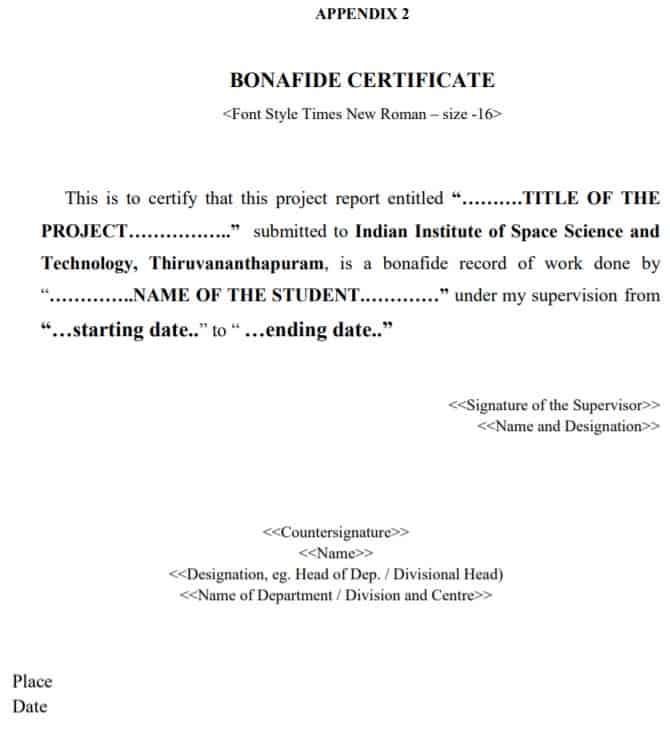
The certificate shall carry the supervisor‟s signature and HoD’s signature fro projects done in IIST and signatures of equivalent people if it is done outside IIST.
3.3 Declaration by Author(s) –see template in appendix 3
3.4 Abstract –Abstract should be straight to the point; not too descriptive but fully informative. The following things should appear in the abstract.
(a) the problem addressed,
(b) its importance/novelty,
(c) the approach adopted for solving the problem, highlighting novelty, if any,
(d) the major results obtained,
(e) and the major conclusion.
The abstract does not have to be an entire summary of the project, but rather a concise summary of the scope and results of the project. It should inform a reader whether to read or not the full text, and also give a precise idea on what has been attempted. An abstract should be short, and limited to 1 page. Include key words (Font Style: Times New Roman and Font Size: 12, Spacing: Single)
3.5 Table of Contents –
The table of contents should list all material following it as well as any material which precedes it. The title page, Bonafide Certificate, and Declaration by Authors may not be included in the Table of Contents, but the page numbers of which are in lower case Roman numbers. The format of the table of contents is given in Appendix 4.
3.6 List of Symbols, Abbreviations and Nomenclature –Standard symbols, abbreviations etc. should be used.
3.7 Chapters –
The main text will be divided into several chapters and each chapter may further be divided into sections and subsections. Chapters, sections, and subsections should be given appropriate titles. Tables and figures should be placed in the immediate vicinity of the first reference to them. Figure and table numbers should carry their chapter number. For example Fig. is the second figure in the fourth chapter.
The following are suggested chapters and what they could contain. The division into chapters may vary from project to project. The important point is that the report should mainly contain the work accomplished in the project, with a small portion devoted to describing the problem addressed and how others have tackled this or similar problems. The report should be understandable to your classmates. It should have sufficient detail to enable the examiners to assess the validity of the approaches used and the results obtained.
a) Introduction
Introduction could contain the following. (a) brief statement of the problem, (b) importance/novelty of the problem, (c) related literature – how others have addressed this or similar problems and the relevant results they obtained (For example, “It has already been reported [1]……” OR “Jiang et al [2] reported that….” OR “It is known [3] that….” etc., where [1], [2], [3], should be detailed in the reference section as per the format given below), (d) scope of the project – precise idea on what is to be achieved in the work, (e) brief statements on what subsequent chapters contain.
b) Approach Used
This could be in one or more chapter. It should give the details of the approaches used by the student for arriving at results. The approach could be theoretical, computational, experimental, or a combination of these. The description should be detailed enough to enable someone else with the author’s background to use the same approach and get the same results. Detailed part of the description, parameter values
used, etc can be be presented in Appendices.
c) Results and Discussion
This could also be in one or more chapters. These chapters include the specific details of data generated and results obtained, in graphical and/or tabular form. Based on the analysis and interpretation of data and results, major findings should be pointed out unambiguously. It should be noted that the findings are to be summarized according to the significance to the stated objectives, and should complement the latter. Detailed aspects can be presented in Appendices.
d) Conclusions and Recommendations
Conclusions are to be drawn with reference to the previously stated objectives of the project. This should highlight the major results. Recommendations are often more important than conclusions. It is known to us how to do better only after we finish a project, i.e. after we obtain an appropriate experience. Particularly, students‟ experiments are hampered due to lack of experience, time, methods and equipment as well as insufficient attention to accuracy and details. Recommendations should be given for any further changes or work that would better accomplish the project objectives, or can extend them.
Note:是非常重要的画出人物和以re the tables yourself. If any figure or table or data or result or opinion is not yours, cite relevant reference. If you do not cite reference in such cases, you will be regarded to have plagiarized/stolen the material. This could lead to punitive action.
(e) Appendices –Appendices may be provided to give supplementary information, which is included in the main text may serve as a distraction and cloud the central theme.
(f) List of References –The listing of references should be typed below the heading “REFERENCES” in the order in which they appear in the work. A typical illustrative list is given below.
REFERENCES
1. Shapiro, A. H., The Dynamics and Thermodynamics of Compressible Fluid Flow – Vol.1, The Ronald Press Company, New York, 1953, p.383-384.
2. Jiang, Z., Takayama, K., and Skews, B. W., “Numerical Study on Blast Flow Fields Induced by Supersonic projectiles Discharged from Shock Tubes,” Physics of Fluids, Vol.10, No.1, 1998, pp.277-288.
3. Ahmadikia, H. and Shirani, E., “Transonic and Supersonic Overtaking of a Projectile Preceding a Shock Wave,” Report-IC/2001/48, International Centre for Theoretical Physics, Italy, 2001.
Download pdf Format Template :
https://www.iist.ac.in/sites/default/files/projectinternship/Internship%20Report%20Format_3.pdf

